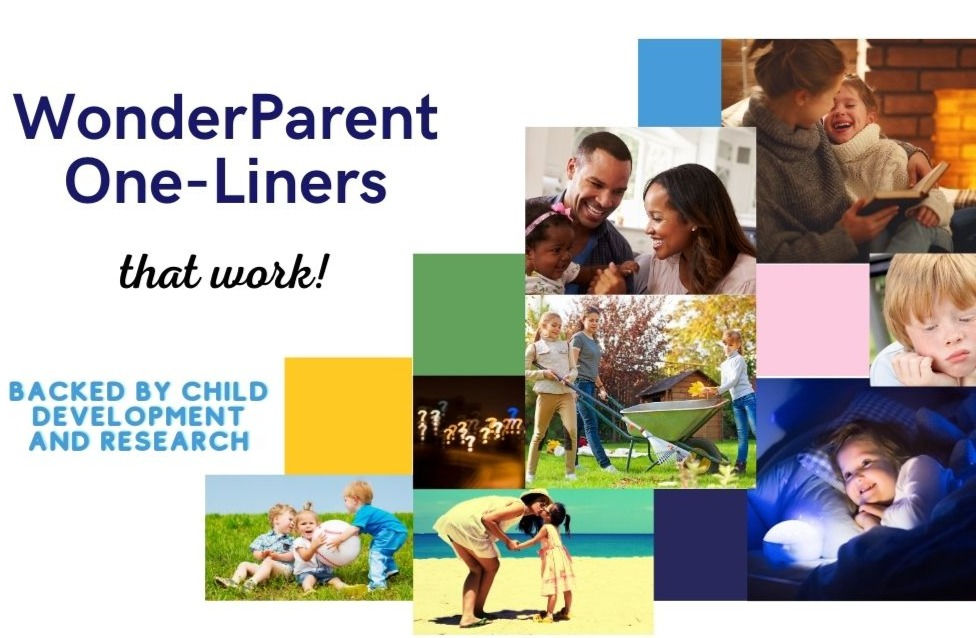The Secret To Early Learning That Lasts And The Most Common Mistake Good Parents Make!
- Nanci J Bradley
- Dec 7, 2019
- 4 min read
Updated: Dec 21, 2020

Most parents want their kids to be both smart and happy? Right? The bigger question, though, is what kinds of things to do or not do in the early years to make sure they reach their greatest learning potential, socially, intellectually, and emotionally. I've been a child and family educator with a MA in human development for 43 years now.

In the world of science, great strides have recently been made because of new tools like PET and especially, MRI scans that can show us which areas of the brain light up with activity during certain experiences.
We now know that babies are programmed to learn through experience, exploration, touch, trial and error, and imitation. According to Sam Wang PhD, Princeton University, we also know that "a child's brain naturally knows how to get what it needs from the world."
The right experiences in early childhood create the right connections for learning. And interestingly enough, play is the way the brain intuitively learns to make the most connections, even more than, say, sitting down and copying letters or doing worksheets. The reason play is so important these days in early childhood research is that it uses multi-sensory experiences to create optimal brain connections. In other words, children know naturally how they learn best and playing helps them by being the vehicle to do so.

Ever wonder why your children "just" want to play all of the time? Now you know! They really just want to learn all of the time. Who'd have guessed? Here's the number one cutting edge technique that you can do to make sure your child's brain gets connected in all the right ways to learn as smoothly and succinctly as possible. Use a multi-sensory approach. This is by far the easiest way to get your kids engaged and making connections.As an early childhood professional who actually works with real children every day, I can give you lots of ideas for multi-sensory play that also teach.
Choose activities that have a combination of auditory, kinesthetic and visual components. Let them play and explore freely, as long as they're safe and conform to the limits of the play area.

Some good examples of multi-sensory experiences that lots of kids love are bath play, sand play, lap reading, playgrounds. swings, (both indoor and out), play dough, putting on plays, music and dance, acting out stories, playing in the snow or at the beach and the best-loved old standard, playing "house"!
Early childhood pros know how to enhance a child's play by keeping them company as they learn. We may support them by answering questions but we let them solve their own problems to the fullest extent that they can.

So if your child is busy playing in the sandbox, sit by them for a while and talk them through a few things. Be attentive to what they're choosing to do without changing their actions. Showing them that you can do it better doesn't help them learn from you. The only time you need to change their actions is if and when they behave inappropriately i.e. throwing sand.
Let them sit on your lap and ask questions while you're reading to them and do this often. Lap reading is one of the best ways for young children to learn. Don't worry if they ask for the same book over and over again.

Children learn by repetition. When you feel like you've had enough, just tell them, OK this is the last time and follow through with your decision no matter what. In that way, you can teach them how to treat you and that's a very important lesson for them to learn.
Do you want to know the most common mistake parents make that hinders instead of helps their child's learning no matter how good the parent's intentions are? Here it is.
They give their children too much help.
Instead of offering just enough help to keep them going, they do things for them. It's easier that way but it doesn't promote the highest level of learning and can lead to a wasted opportunity or frustration. That's a big mistake, especially if it becomes a habit.

Children need to experiment and to fail in small matters in order to learn what they need to learn for the bigger ones. We have to sometimes stand out of their way and let them mess up, no matter how hard it is to see them make mistakes and experience minor frustration.
We're better off teaching them the word frustration and showing them by example how we deal with it when it happens to us. After all, we can't remove frustration from their lives forever so we might as well teach them how to deal with it. And children do learn by example.
I hope you enjoyed this article as much as I enjoyed writing it!.
If you want more information on energy, sleep, learning, or kids and families you can read over 100 short articles written by me with no affiliate links on my blog.

Do you get confused by the "experts" telling you to how to prevent common problems but never mentioning what to do once they actually happen?
Do you feel embarrassed in front of other parents or unsure of the "right" way to handle situations with your children?
Do you try your best but find yourself wondering if teaching problem-solving is possible with young children?
Join our community, it's free and it's fun! When you join, you get instant access to my WonderParents one liners slideshow. The slideshow is available to download for free (49.00 value) for a limited time only, on the members-only section of our site with other fun freebies that we reserve for our VIP members. Join here!

Nanci J Bradley is an early childhood and family educator, parent, author, teacher, SELF-care facilitator, family aerobics instructor, and an all-around fun-loving person. She believes in the power of sleep, healthy eating, lifelong learning, and most of all, PLAY! She studied early childhood ed at Triton College and received her BS in education in 1986 from NIU. She received her MA in human development from Pacific Oaks College in 2011. She lives and teaches in Madison WI. .







Comments